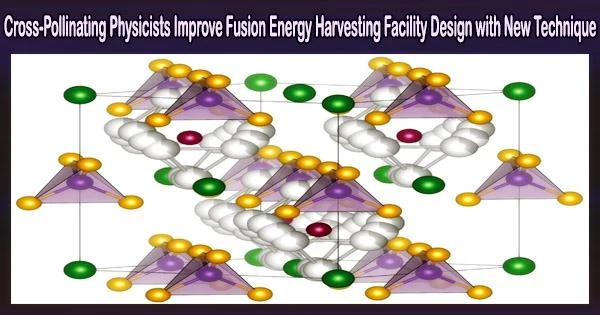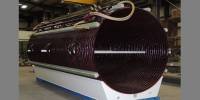The technique of obtaining usable energy from controlled nuclear fusion processes is referred to as “harvesting fusion energy.” Fusion energy, which powers the sun and stars, has the potential to give civilization plentiful, clean, and practically infinite energy if it is efficiently harnessed.
Scientists in physics can cross-pollinate like bees, adopting concepts from one field to make advances in another.
Scientists at the U.S. Department of Energy’s (DOE) Princeton Plasma Physics Laboratory (PPPL) have transferred a technique from one realm of plasma physics to another to enable the more efficient design of powerful magnets for doughnut-shaped fusion facilities known as tokamaks. Such magnets confine and regulate plasma, which powers fusion reactions and constitutes 99 percent of the observable cosmos. Plasma is the fourth state of matter.
These magnets require sophisticated, three-dimensional magnetic fields to be created in order to manage plasma instabilities, which makes their design challenging. Therefore, it is fitting that researchers who create stellarators, which are cruller-shaped fusion machines that need such meticulously built magnets, developed the new method.
In other words, the PPPL scientists are imagining the form and power of twisted tokamak magnets that can stabilize tokamak plasmas and endure the harsh circumstances anticipated in a fusion reactor using stellarator computer code.
This realization may make it easier to build tokamak fusion facilities that transmit solar and astronomical energy to Earth.
“In the past, it was a journey of discovery,” said Nik Logan, a physicist at the DOE’s Lawrence Livermore National Laboratory who led the research while at PPPL. “You had to build something, test it, and use the data to learn how to design the next experiment. Now we can use these new computational tools to design these magnets more easily, using principles gleaned from years of scientific research.”
The reality of building anything is that it isn’t perfect. It has small irregularities. The magnets we are designing using this stellarator technique can both correct some of the irregularities that occur in the magnetic fields and control instabilities.
Nik Logan
The results have been reported in a paper published in Nuclear Fusion.
When light elements are combined, they create plasma, a hot, charged state of matter made up of free electrons and atomic nuclei that produces enormous amounts of energy. Fusion is the process that powers the sun and stars. In order to create an almost limitless supply of power for energy generation, scientists are working to duplicate fusion on Earth.
The results may help in the development of tokamaks by compensating for errors that arise during the translation of a machine from a theoretical design to a physical device or by using carefully controlled 3D magnetic fields to prevent plasma instabilities.
“The reality of building anything is that it isn’t perfect,” Logan said. “It has small irregularities. The magnets we are designing using this stellarator technique can both correct some of the irregularities that occur in the magnetic fields and control instabilities.”
By doing this, the plasma is stabilized by the magnetic field to prevent potentially harmful heat and particle bursts.
Logan and colleagues also discovered that these magnets may influence the plasma even when positioned up to a few meters away from the tokamak’s walls.
“That’s good news because the closer the magnets are to the plasma, the more difficult it is to design them to meet the harsh conditions near fusion reactors,” Logan said. “The more equipment we can place at a distance from the tokamak, the better.”
The technique relies on FOCUS, a computer code created mainly by PPPL physicist Caoxiang Zhu, a stellarator optimization scientist, to design complicated magnets for stellarator facilities.
“When I was first building FOCUS as a postdoctoral fellow at PPPL, Nik Logan stopped by my poster presentation at an American Physical Society conference,” Zhu said. “Later we had a conversation and realized that there was an opportunity to apply the FOCUS code to tokamak projects.”
The collaboration between different subfields is exciting. “I’m happy to see that my code can be extended to a broader range of experiments,” Zhu noted. “I think this is a beautiful connection between the tokamak and stellarator worlds.”
Stellarators have long been the second-most popular fusion device behind tokamaks, but they are increasingly gaining popularity due to their propensity to produce stable plasmas. Currently, tokamaks are the preferred fusion reactor design, however their plasmas have the potential to become unstable and harm the reactor’s internal parts.
PPPL researchers are now designing and updating magnets for a number of tokamaks all around the world utilizing this novel approach. The roster includes COMPASS-U, a tokamak operated by the Czech Academy of Sciences; and the Korea Superconducting Tokamak Advanced Research (KSTAR) facility.
“It’s a very practical paper that has practical applications, and sure enough we have some takers,” Logan said. “I think the results will be helpful for the future of tokamak design.”
















